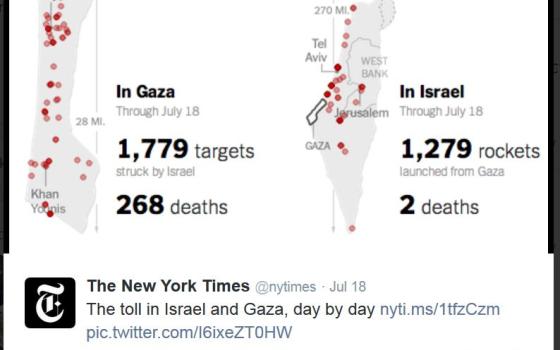In mid-June, three Israeli teens were abducted and killed, according to Israel, by the Palestinian militant group Hamas. On July 2, in a supposed retaliation, a Palestinian teenager was burned to death, allegedly by three Israeli men. The four teenager’s deaths sparked a violent turn in the already simmering tensions between the Israelis and Palestinians, and last week – after 10 days of Israeli bombs and Palestinian rocket attacks – Israel launched a ground offensive against Hamas in Gaza.
In the days since the offensive, social media sites like Facebook and Twitter have been teeming with opinions and accusations. But here are three statistics about the conflict from trusted news sources and top Middle East experts:
- The past month’s fighting has been some of the bloodiest in recent Israeli-Palestinian history, and last weekend was the deadliest of the current conflict. According to Monday post from the United Nations Refugee Work Agency – which works specifically with Palestinian refugees – a record 107 Palestinians were killed, 35 of whom were children. The Israeli army also reported record losses this weekend, with 13 soldiers killed.
- In addition to human casualties, the current violence has also destroyed essential infrastructure. Because of compromised water and sewage facilities, Amnesty International U.K. reports that half of Gaza’s population is without access to clean water.
- Although it may appear that Israelis and Palestinians are diametrically opposed on all matters, polls done by the Hebrew University and the Palestinian Center for Policy and Survey Research found that the majority both Israelis and Palestinians support a two-state solution. Sixty-three percent of Israelis would like to see separate Palestinian and Israeli states, and 53 percent of Palestinians would like to see two states.
This map (also shown above) from The New York Times’ Twitter feed shows the locations of Israeli and Palestinian casualties through the first day of the Israeli ground offensive. This article outlines casualties over a course of days, with the last update and total on July 22 (at the time of this blog’s posting).

